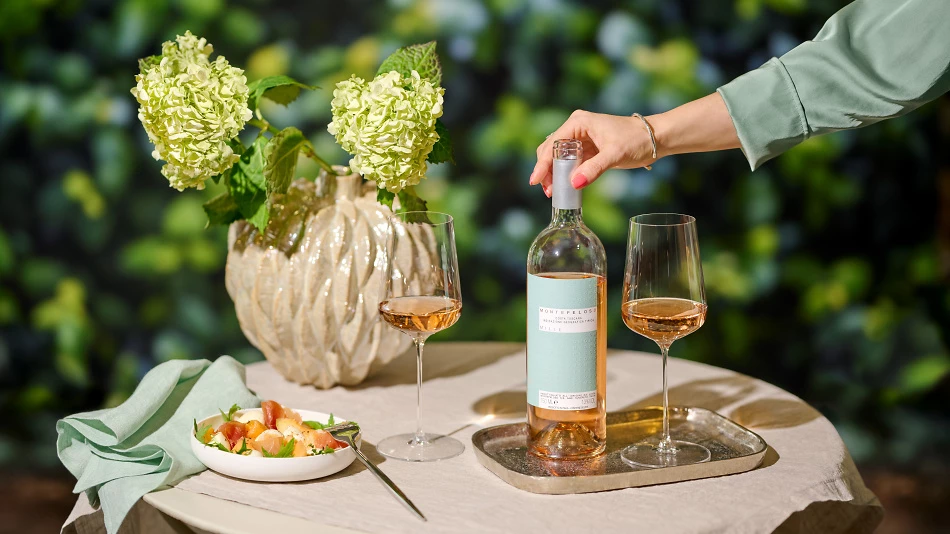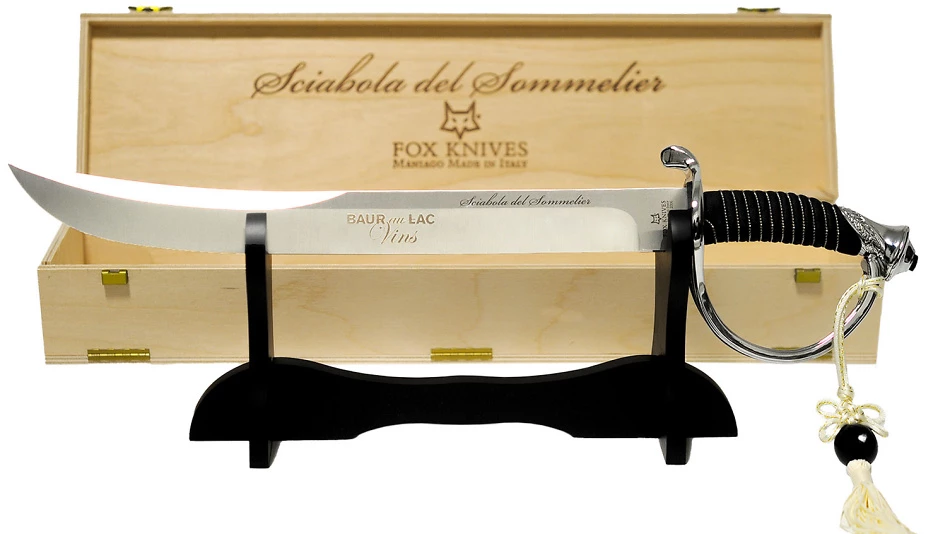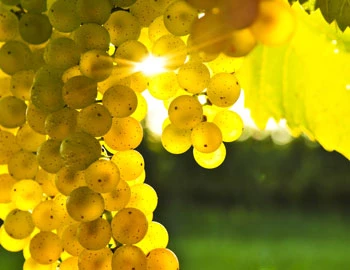
André Clouet Brut Millésimé 2015
AOC Champagne, 750 ml

| Grape variety: | Chardonnay, Pinot noir |
| Producer: | Champagne André Clouet |
| Origin: | France / Champagne |
Description
Winemaker Jean François Clouet had a grandmother from Bouzy, home of legendary Pinot Noirs, and a grandfather from the Côte des Blancs, world-famous for Chardonnay. The two grapes marry fifty-fifty to create a vintage champagne full of race, depth and elegance.
Citrus fruits, flowers and brioche unfold on the nose. Rich, powerful and yet finely chiselled on the palate. Yellow fruits combine with a lively acidity, while the creamy and smooth perlage rounds off the flavour experience.
Lends wings to buttery pastries, whether flûtes or vol-au-vent. A wonderful accompaniment to food!
Spring in a glass

Discover our «Spring by the glass»: these are refreshing drops that perfectly match the season at reduced prices, valid until 30 April 2025.
Celebrate the Art of Sabring!

With its elegant design, this champagne sabre is not only an impressive eye-catcher at any celebration and an indispensable tool for stylish sabering, but also the perfect gift for all passionate sparkling wine lovers.
Attributes
| Origin: | France / Champagne |
| Grape variety: | Chardonnay, Pinot noir |
| Ripening potential: | 3 to 15 years |
| Drinking temperature: | 8 to 10 °C |
| Food Pairing: | Apéro pastries, Apéro riche, Smoked fish, Sushi, Sashimi, Ceviche, Coquilles Saint Jacques on lentils |
| Vinification: | bottle fermentation |
| Harvest: | hand-picking |
| Maturation: | on the yeast |
| Maturation duration: | 36 months |
| Volume: | 12.0 % |
| Note: | Contains sulphites |
Champagne André Clouet
We didn’t find the low house, dating from the 17th century, straight away, even though the village of Bouzy is not very large. Modest buildings are grouped around a courtyard, behind which a vineyard lies, similar to a clos.
But first of all, Jean François Clouet, last scion of this old family that is traceable to the court of Louis XV, guided us to an elevation. We found ourselves above Bouzy on the south side of the Montagne de Reims range of hills. Jean François points westwards: In 451 AD, Attila the Hun came riding from that direction and it was here that he met the army of the Western Roman Empire. But today, instead of a battlefield, a tranquil sea of vines stretches towards the horizon.

Champagne André Clouet
We didn’t find the low house, dating from the 17th century, straight away, even though the village of Bouzy is not very large. Modest buildings are grouped around a courtyard, behind which a vineyard lies, similar to a clos.
But first of all, Jean François Clouet, last scion of this old family that is traceable to the court of Louis XV, guided us to an elevation. We found ourselves above Bouzy on the south side of the Montagne de Reims range of hills. Jean François points westwards: In 451 AD, Attila the Hun came riding from that direction and it was here that he met the army of the Western Roman Empire. But today, instead of a battlefield, a tranquil sea of vines stretches towards the horizon.

Chardonnay
King or beggar?
Hardly any variety of vine shows such a broad spectrum of quality as the Chardonnay. Its wines range from faceless neutrality to breath-taking class. It is an extremely low-maintenance vine, which explains why it is grown around the world – even in places where it probably should not be. The aromas of the Chardonnay variety are not very pronounced: a bit of green apple, a little hazelnut; in warmer latitudes, also melon and exotic fruits. The wines are often defined by maturing in casks. They develop more or less subtle notes of butter, toasted bread and vanilla. The grapes achieve their highest expression in their region of origin, Burgundy. Its heart beats in the Côte de Beaune: one might think of the plant growth of Meursault or Puligny-Montrachet. With their finesse and complexity, they can survive for decades. Chardonnay also achieves first class in some Blanc-de-Blancs champagnes. It additionally yields great wines in the Burgundian Chablis, and increasingly in Australia and Chile. A simple rule of thumb for pairing with food: When butter and cream are involved, you cannot go wrong with Chardonnay.

Pinot noir
Blueprint of the terroir
No other variety expresses its terroir as precisely as Pinot noir. It is a sensitive, fragile grape. But when it succeeds, it gives the world some of its very greatest wine plants. It especially excels in Burgundy, where it has been cultivated for at least 700 years. Even in the middle ages, it was considered so precious that it was kept separate from other grapes so as to not diminish its value. The finest examples are delicate and fragrant with aromas of cherries and red berries. With maturity, notes of forest floor, leather and truffles enter as well. An irresistible fruity sweetness still shines through, even after several decades. The Pinot noir does well in cool locations: in Switzerland and in Germany, where it is known as Blauburgunder and Spätburgunder respectively; in Alsace and in South Tyrol, in Oregon, New Zealand and Tasmania. Not least, it yields fantastic champagnes. It is a wonderful culinary companion. With its soft tannins and charming bouquet, it meshes with everything, from Güggeli and cheeses to fried fish.

France
France – Philosophy in a bottle
According to French philosophy, wine should be an expression of the soil and climate. They use the word “terroir” to describe this. Terroir makes every wine different, and many especially good. French wine is regarded worldwide as an expression of cultural perfection. The French believe that humans are responsible for the quality of the berries, the vine variety for their character, and nature for the quantity. This philosophy can be expressed succinctly as: “the truth is the vineyard, not the man.”


